#authorised biography
Text
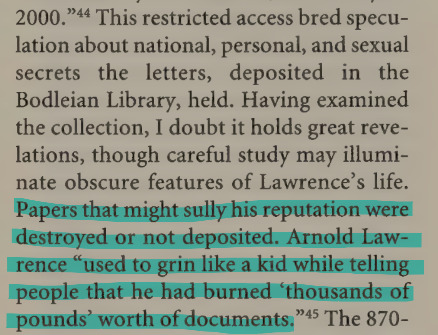
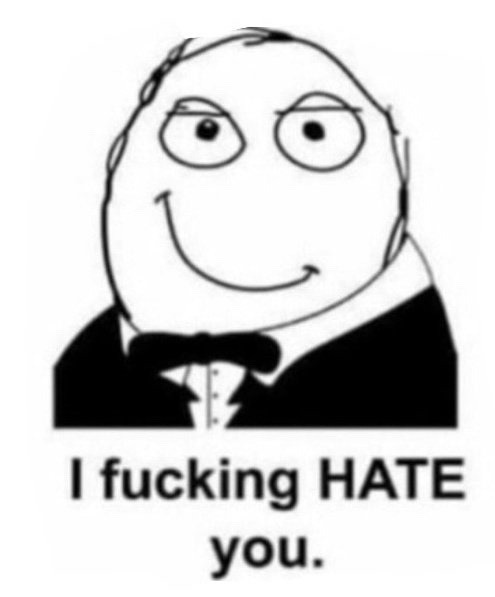
#angery >:(#this man had an agenda with the “authorised” biography#and yes it was about sexuality any hint of a close relationship with a male is dismissed in that book
4 notes
·
View notes
Text
John and Paul commenting on each other's appearance
John about Paul
I was very impressed by Paul playing “Twenty Flight Rock”. He could obviously play the guitar. I half thought to myself – he’s as good as me. I’d been kingpin up to then. Now, I thought, if I take him on, what will happen? It went through my head that I’d have to keep him in line, if I let him join. But he was good, so he was worth having. He also looked like Elvis. I dug him.
(Hunter Davies’ The Beatles: The Authorised Biography (1968))
John: It [topless swimsuit/topless frock] sounds like a vaguely good idea but I wouldn’t have my wife or any friends wearing them.
Paul: Well, you’ve got us wearing them.
John: I know, Paulie, you’re so well-built!
3. John (Thisbe) talking about Paul's (Pyramus') appearance during "Midsummer's Night Dream" rehearsal: Dead, dead. A tomb must cover thy sweet eyes! These lily lips... His cherry nose. He's Cherry Wainer. His yellow cowslip cheeks!
4.
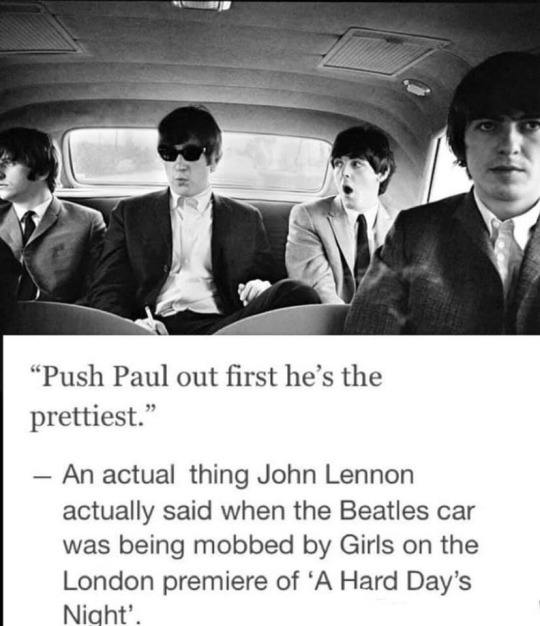
(although I also know the version that it was during the making of the movie Help!)
5. A pretty face may last a year or two/ But pretty soon they'll see what you can do
(How Do You Sleep? (1971))
(Side note: I know that in this case John tried to discredit Paul by claiming that he only had a "pretty face" and nothing more to be proud of. It doesn't change the fact that he probably thought Paul was hot, too)
6. At one stage I went out, and when I came back he was talking to this woman and he said “She said, ‘I thought he was Paul, meaning McCartney.’” So John turns around and says, “No, he’s prettier than Pauly. He’s got a nicer mouth than Pauly. Pauly’s got a small mouth.”
(Tony Manero on meeting John Lennon in 1974, in Glass Onion by Geoffrey Giuliano (1999))
Paul about John
"I remember John looking..hmm.. we used to think that John looked pretty cool. He was a bit older than us and he would do a little more greased back hair than we were allowed… so John was quite groovy. He looked like a ted then - he had a drape. He had nice big sideburns."
"Ah yes, I remember it well. My memory of meeting John for the first time is very clear [...] I can still see John now: checked shirt, slightly curly hair, singing ‘Come Go With Me’ by the Del Vikings. I remember thinking, ‘He looks good – I wouldn’t mind being in a group with him’. A bit later we met up. [...] Then, as you all know, he asked me to join the group, and so we began our trip together. We wrote our first songs together, we grew up together and we lived our lives together.”
"I’d seen him a couple of times [before the fete] and thought, ‘Wow, you know, he’s an interesting looking guy.’ And then I once also saw him in a queue for fish and chips and I said, ‘Oh, that’s that guy off the bus’. I’m talking to myself, in my mind I thought, ‘I saw that guy off the bus, oh he’s pretty cool looking. Yeah, you know, he’s a cool guy.’ I knew nothing about him except that he looked pretty cool. He had long sideboards and greased back hair and everything. [...] This ted would get on the bus, and I wouldn't stare at him too hard in case he hit me."
(1997)
Paul: Nobody was remotely interested in this idea of I wrote songs until I met John! I said: I’ve written a few songs. And he said: Oh, so have I! So it was like… someone was interested at last. And I’d seen him around Liverpool, he’d got on a bus once and I said: Woah, look at this guy! At the big sideboards, you know, the hair swept back. I thought: He’s got something going.
Howard Stern: Good look.
Paul: Yeah, he definitely had a look!
(2020)
5. “I used to do caricatures of John. He was the only person I knew with an aquiline nose. When I painted him recently, I found myself saying: 'How did his lips go? I can't remember.' Then I would think: 'Of course you know, you wrote all those songs facing each other.'”
6. “If I'm going to see a face in a painting, it's highly likely to be his.”
7. “And I would often sketch John when we worked together, often without him knowing it. It was so easy doing John because he had glasses, those sideboards – what you call sideburns – and that long, aquiline nose.”
8. "I would often sketch John when we worked together, often without him knowing it. It was so easy doing John because he had glasses, those sideboards –or sideburns – and that long, aquiline nose.”
Source of quotes 5,6,7,8: https://www.tumblr.com/undying-love/748219983302098944/paul-mentioned-that-john-was-often-the-subject-of?source=share
9. “A young boy's bedroom is such a comfortable place, like my son's bedroom is now; he's got all his stuff that he needs: a candle, guitar, a book. John's room was very like that. James reminds me very much of John in many ways: he's got beautiful hands. John had beautiful hands."
(Barry Miles, Many Years From Now (1997))
10. “But I don’t have any regrets, we were good friends when he died so… that’s something. And he was a beautiful boy!”
11. “Beautiful boy, beautiful memories…”
12. “So I loved him dearly. He was a very beautiful man.”
Thanks to @undying-love, they had a lot of useful quotes!
Pls add more quotes if you know any.
70 notes
·
View notes
Text
youtube
The Complete Amateur's Guide to Moomin
By popular demand, I have compiled every video in my 'Amateur's Guide to Moomin' into one convenient video, with additional footnotes, corrections, and a newly added section discussing the changes that have occurred with the Moomin series since the publishing of the original videos. Join me as I explore the series' history and its author, Tove Jansson, to discover what we can learn from this peaceful family of trolls.
Special thanks to @marsmombestmom for helping with the Swedish Translation and corrections.
Bibliography:
Augsburger Puppenkiste. Die Muminfamilie, ARD, 1959.
Boel Westin. Tove Jansson : Life, Art, Words : The Authorised Biography. London, Sort Of, 2014.
Bosworth, Mark. “Tove Jansson: Love, War and the Moomins.” BBC News, BBC, 13 Mar. 2014, bbc.com/news/magazine-26529309.
Box, Steve, et al. Moominvalley. Yle TV2 / Sky One, 25 Feb. 2019. 13 x 22 minutes.
Dębiński, Lucjan, and Maria Kossakowska. The Moomins, Episode 1-100, Se-Ma-For, 1977.
Gutsy Animation. “Moominvalley Crowdfunding Campaign.” Indiegogo, 8 Mar. 2017, indiegogo.com/projects/moomin#. Accessed 30 May 2023.
Jansson, Tove, and Elizabeth Portch. Comet in Moominland. Puffin Books, 2019.
Jansson, Tove, and Kingsley Hart. Moominpappa at Sea. Puffin Books, 2019.
Jansson, Tove, and Kingsley Hart. Moominvalley in November. Sort Of Books, 2018.
Jansson, Tove, and Thomas Warburton. Moominsummer Madness. Puffin Books, 2019.
Jansson, Tove. Finn Family Moomintroll. Translated by Elizabeth Portch, Puffin Books, 2019.
Jansson, Tove. Moomin: The Complete Tove Jansson Comic Strip. Drawn & Quarterly, 2010.
Jansson, Tove. Moominland Midwinter. Paw Prints, 2008.
Jansson, Tove. Tales from Moominvalley. Penguin Books Ltd, 2019.
Jansson, Tove. The Exploits of Moominpappa. Penguin Books Ltd, 2019.
Jansson, Tove. The Moomins and the Great Flood. Drawn & Quarterly, 2018.
Karjalainen, Tuula, and David McDuff. Tove Jansson: Work and Love. Penguin Books, 2016.
Lamppu, Eva. “Big in Japan, but Could America Love Moomin?” Reuters, Thomson Reuters, 6 Oct. 2009, reuters.com/article/us-moomins/big-in-japan-but-could-america-love-moomin-idUSTRE59501Z20091006.
Miyazaki, Akira, et al. “Tanoshii Mūmin Ikka.” Tanoshii Mūmin Ikka, season 1, episode 1-78, TV Tokyo, 1990.
“Moomin Characters as Tove's Self-Portraits.” Moomin, 15 May 2019, moomin.com/en/blog/moomin-characters-as-toves-self-portraits.
“Moomin Products in the 1950s.” Moomin, 15 May 2019, moomin.com/en/blog/moomins-in-the-1950s.
Moomintrivia. “Psychology of The Invisible Child.” Moomin Trivia, 10 June 2019, moomintrivia.tumblr.com/post/185491696931/psychology-of-the-invisible-child.
Moyle, Franny. Moominland Tales: The Life of Tove Jansson. Youtube, BBC 4, 2012, youtube.com/watch?v=tYgC0nKyF0g.
“The Story of How Moomintroll Was Born.” Moomin, 12 Jan. 2020, moomin.com/en/blog/the-story-of-how-moomintroll-was-born.
“Who Inspired Tove When Creating Moominmamma?” Moomin, 15 May 2019, moomin.com/en/blog/who-inspired-tove-when-creating-moominmamma.
“Who Inspired Tove When Creating Moominpappa?” Moomin, 15 May 2019, moomin.com/en/blog/who-inspired-tove-when-creating-moominpappa.
Yamazaki, Tadaaki. Moomin, Fuji TV, 1969.
YLE News. “Finland’s Most Expensive TV Show: New Moominvalley Series.” Yleisradio Oy, the Finnish Broadcasting Company, 25 Jan. 2019, yle.fi/a/3-10614150. Accessed 30 May 2023.
#video essay#moominhouse#moominvalley#the moomins#tanoshii moomin ikka#moomin#snufmin#moomin x snufkin#snufmumriken#little my#moomin video#comet in moominland#tove jansson#Youtube
129 notes
·
View notes
Text
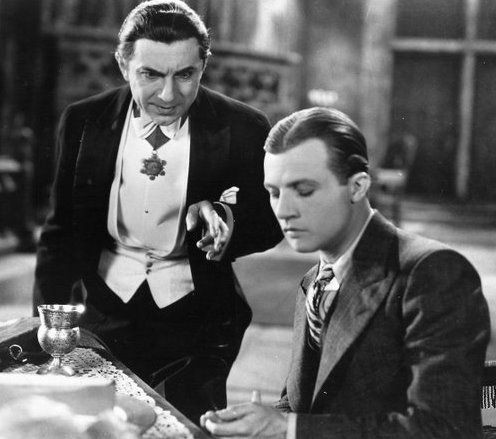


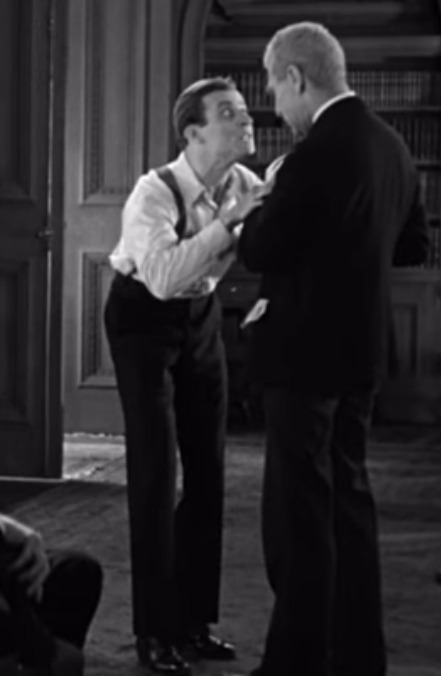

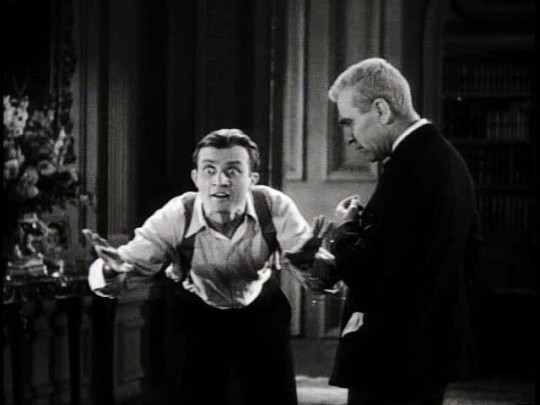

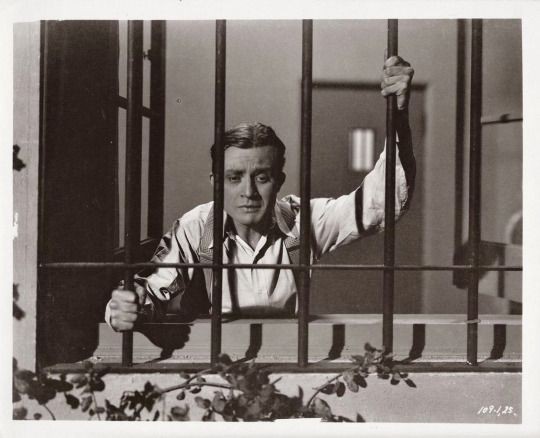

Dwight Frye (born Dwight Iliff Fry) as R.M. Renfield in Dracula (1931)
Dwight Frye (born Feb 22 1899, died Nov 7 1943) is most well-known for playing R.M. Renfield, Dracula's insect-eating servant, in Dracula (1931). The same year, he took on his other most well-known role; Fritz, Dr. Frankenstein's hunchbacked assistant, in Frankenstein (1931). Frye's career and life was cut short as he unfortunately passed away at the age of 44 due to a heart attack on a bus, a few days prior to beginning filming for the 1944 biopic Wilson.
Fun facts:
Frye was from Salina, Kansas, and was a Broadway actor prior to acting in movies. His career spanned from 1917 to his death in 1943.
American rock band Alice Cooper wrote and recorded a tribute track to Frye called The Ballad of Dwight Fry (the last "e" being intentionally dropped).
A biography, Dwight Frye's Last Laugh, was published in 1997 and was authorised by Frye's son Dwight D. Frye. It talks about his early work, Broadway career, and eventual typecasting in film.
#dwight frye#r.m. renfield#dracula 1931#bela lugosi#vampires#30s actors#30s horror#film history#renfield#classic horror#gothic horror#dracula#1930s#1930s actors#1930s horror#universal monsters
98 notes
·
View notes
Text
Be aware... an autobiography is never the whole truth
So, Twitter, Instgram and TikTok is a bit of a shitshow at the moment, all because some in the fandom have received the book early. Obviously, it has galvanised some shippers with interesting (but not connected titles) to misrepresented events that don't paint the whole picture.
Things to keep in mind...
The author is an employee of HYBE, he's an editor at Weverse Magazine.
Most authorise biographies would hire an external author not connected to artist in so directly, but HYBE choose someone internal to help control the narrative.
It (probably) took 2 to 3 years to research, compile, write and edit this book. So, focuses heavily of on the original contract phase and crams 3 years into 1 chapter.
The sections I've read, read a little like the editor comments on events in content like In The Soop or Run BTS. The frame the words spoken by the members in such a way to lead to you a specific conclusion. Like in the Date Night in In the Soop.
So, in another 10 years' time expect a second biography equally has manipulated.
I understand why HYBE have done it this way, I don't agree with it. That's why we should always look directly to the members for anything resembling the 100% truth.
44 notes
·
View notes
Text
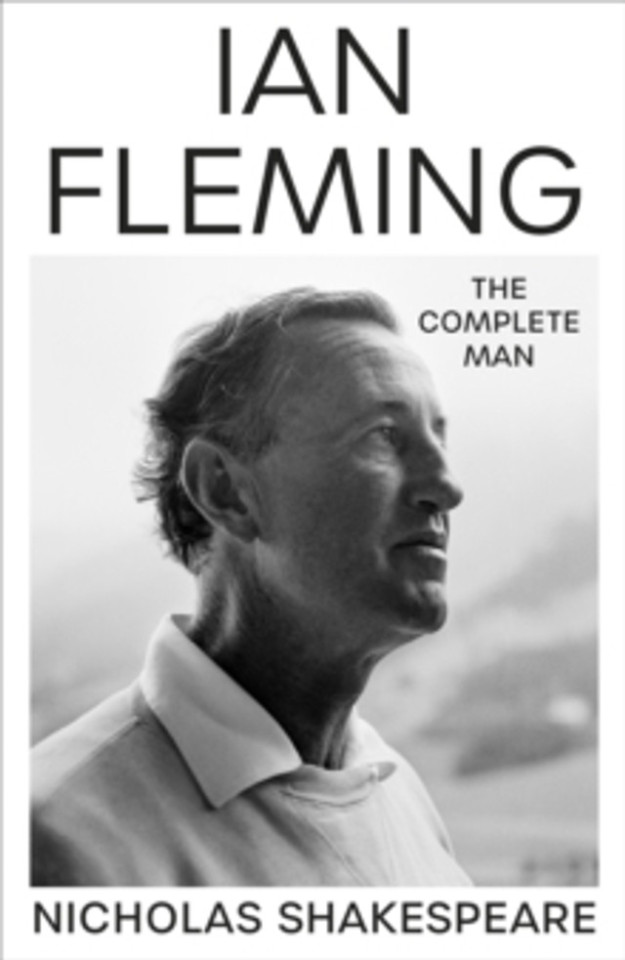
Nicholas Shakespeare’s elegant biography of the James Bond author Ian Fleming takes its subtitle from a journalist’s observation, quoted halfway through, that its subject was “for a moment of time, a complete man” while working for British naval intelligence in the second world war. Yet you can’t help read it as a promise to give the reader what was left out of previous biographies such as John Pearson’s crisp, more portable authorised life from 1966. And is there a claim, too, for the alpha male credentials of the man called “Flemingway” by his friend Noël Coward? Journalist, stockbroker, thriller writer and – like his famous creation – a playboy and 70-a-day smoker, who died of a heart attack in 1964 at the age of 56 after a plagiarism row over the origins of Thunderball, the ninth Bond novel.
After a dutiful account of how Fleming’s Scottish financier grandfather became a millionaire – later cutting Fleming and his brothers out of his will – Shakespeare gets going with his subject’s troubled boyhood in the shadow of his father’s death in the first world war. Family friends in Switzerland take his education in hand after hasty exits from Eton (hanky-panky with a woman) and Sandhurst (gonorrhoea). His exams aren’t good enough for the Foreign Office; an engagement to a Swiss lover ends amid maternal threats to cut off his allowance. He falls on his feet at Reuters – it was that kind of life – further honing his knack for a scoop at the Sunday Times, a handy source of contacts for his war work.
Testimony woven from diaries, papers and interviews gives the book a flavour of oral history. Shakespeare goes to great lengths – not least tracking down a 94-year-old veteran, the last surviving member of a covert commando unit that Fleming organised – to dispel the idea that Fleming’s service, occluded by state-sanctioned secrecy, was just “in-trays, out-trays and ashtrays”. The book’s first half puts the future author at the heart of military and journalistic history – a search for German weapons of mass destruction; the race to get an inside scoop on the Cambridge spies – as well as the bedroom shenanigans of the English well-to-do. (Shakespeare, who encourages us at one point to smile at the mention of a “germanely” named Nazi admiral, Assmann, shows his assumptions of his audience when he writes confidently of “that small, turn-of-the-century intellectual clique, the Souls”.)
Fleming may be “the man behind James Bond”, in the subtitle of Andrew Lycett’s 1995 biography, but Shakespeare’s project, you sense, is partly to say there’s more to him. Eager to prove Fleming’s interest beyond the reasons that will draw most of his readers to the book, he is almost comically insistent on the degree to which his subject was ahead of the curve. Not only might he have sparked the idea of creating the CIA – in a memo written when the US-UK special relationship was being forged – but he also came up with the idea of putting a Christmas tree from Oslo in Trafalgar Square.
As for the dozen Bond novels that poured out of Fleming after 1953’s Casino Royale – written in a month in his winter bolthole in Jamaica a year earlier – they were, in Shakespeare’s telling, essentially the literary expression of a midlife crisis accelerated by the encroachments of fatherhood and a faithless union as the third husband of Ann Charteris. They had got together with an affair that caused a high-society scandal during her previous marriage to the Daily Mail heir Esmond Harmsworth; she later cheated on Fleming with the Labour leader Hugh Gaitskell, who told him that the “sex, violence, alcohol” formula of the Bond novels was “to one who leads such a circumscribed life as I do, irresistible”.
Fleming, injecting the American dirt of Mickey Spillane’s Mike Hammer novels into the English thriller, launched 007 on what Shakespeare calls the “spam-munching gloom of Attlee’s Britain”, writing (Fleming told his publisher) in order to make “as much money... as possible” and to have “as much fun as I personally can”. Respectable sales rocketed when JFK took a shine to From Russia, with Love – and the movies were yet to come. While Fleming was self-deprecating – telling Raymond Chandler the Bond novels were “straight pillow fantasies of the bang-bang, kiss-kiss variety” – he was proud enough to greet the director of the first Bond movie, Dr No, by telling him: “So they’ve decided on you to fuck up my work.”
“Luck had to be accepted with a shrug or taken advantage of up to the hilt,” Bond thinks in Casino Royale; he sees luck “as a woman, to be softly wooed or brutally ravaged, never pandered to or pursued”. Squint enough and Fleming took some care to cast his main character in ironic light. Early in that novel, the reader gets a fly-on-the-wall thrill of watching fieldwork in action, with the scene of theatrical care Bond takes to ensure his hotel room isn’t being searched; but soon enough his French sidekick turns up to let Bond know his upstairs neighbours have been listening in to his every move.
In Shakespeare’s biography, the novels are mostly a source of supporting quotation – he doesn’t get bogged down in questions of what it means to read Bond now, confining himself to a remark on how his “cavalier treatment of women... carried the sexual climate of the Blitz into the austerity of the cold war, and was less modern perhaps than it was later cracked up to be”. And perhaps there’s no need for his defenders to overstate the case for Fleming’s novelistic subtlety. Bond has always been shaped by a collective amnesia that allows us to make him what we wish him to be at any given moment; when he parachuted into the Olympic opening ceremony with the queen, it was as the best of British, not as a connoisseur of (Fleming’s words) “the sweet tang of rape”.
The novels, in a way, are irrelevant to 007, but the course of history would surely have run otherwise had Fleming not had the foresight to change his protagonist’s name from the original “James Secretan” – Fleming’s typescript revision perhaps his most significant literary act.
Daily inspiration. Discover more photos at Just for Books…?
18 notes
·
View notes
Text
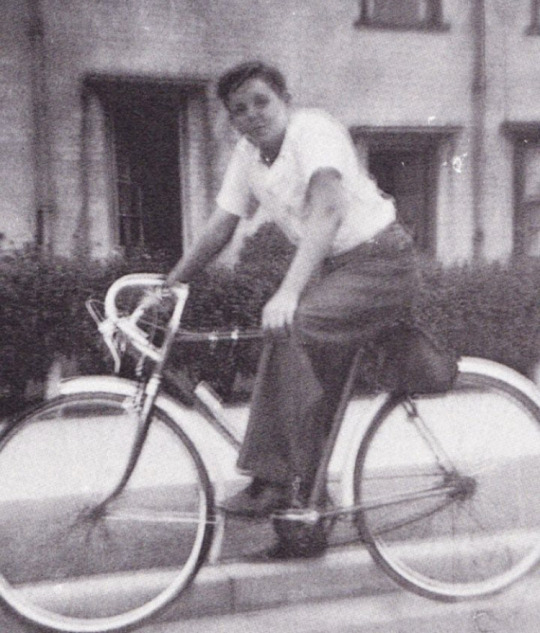
"Paul used to come to my front door, he'd lean his bike against the fence and look over at me with his sheep eyes and say 'Hello, Mimi. Can I come in?' (to see John) 'No, you certainly cannot,' I'd say."
Aunt Mimi, The Beatles: The Authorised Biography by Hunter Davies
#SMALL PAUL I love this picture#paul mccartney#the beatles#george harrison#john lennon#ringo starr#mclennon#aunt mimi#classic rock#beatles#richard starkey#brian epstein
283 notes
·
View notes
Text
@boxenstopp
thank you for asking, because I wanted an excuse to share. ahem, an excerpt from his authorised biography, The Unknown Kimi Räikkönen:
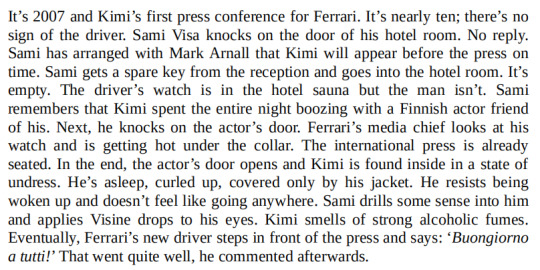
#like what else is left for fic writers to do?#there's also absolutely no other context for this. they just drop it on us and move on#yadda yadda ya
10 notes
·
View notes
Text
THIS DAY IN GAY HISTORY
based on: The White Crane Institute's 'Gay Wisdom', Gay Birthdays, Gay For Today, Famous GLBT, glbt-Gay Encylopedia, Today in Gay History, Wikipedia, and more … February 18

二月食吧


1907 – Billy De Wolfe, American actor, born William Jones (d.1974); A character actor, he was active in films from the mid-1940s until his death and was a good friend of Doris Day. He was never married, and is generally believed to have been a homosexual.
He signed with Paramount Pictures in 1943 and became a reliable comedian. His pencil-mustached and often pompous character contrasted humorously with the films' romantic leads. His best-known role of his Paramount tenure is probably the ham actor turned silent-movie villain in the 1947 fictionalized Pearl White biography The Perils of Pauline.
De Wolfe became known for his portrayal of fussy, petty men ("Never touch!," he would say imperiously whenever someone accosted him physically). A New York Times review of his 1948 film Isn't It Romantic? strongly criticized the way the other actors' material limited their performances, contrasting their performances with his: "But Mr. De Wolfe is nothing daunted. He rips up the place with great delight. The material is at his mercy. Likewise the scenery. And he chews it to bits."
He appeared regularly in guest roles on television, including the first two episodes of NBC's The Imogene Coca Show. He reappeared as Mr. Jarvis on CBS's The Doris Day Show, and co-starred with Larry Storch in a short-lived TV sitcom, The Queen and I. He often appeared on talk shows and in TV commercials, doing his "Mrs. Murgatroyd" drag routine. Wearing a hat and a shawl (but still sporting his mustache!), DeWolfe (as old maid "Phoebe Murgatroyd") would claim to be an expert on romance, and answered questions from the lovelorn.
Generations of TV viewers know Billy DeWolfe only by his voice: his is the voice of the frustrated magician in the Christmas perennial Frosty the Snowman. DeWolfe gave the role his usual fussy diction: "Mess-y, mess-y, mess-y! Bus-y, bus-y, bus-y!"


1931 – Charles Higham (d.2012) was an English author, editor and poet. Higham was a recipient of the Prix des Créateurs in 1978 and of the Académie Française and the Poetry Society of London Prize.He is best remembered as the writer of sensationalist biographies, especially Errol Flynn: The Untold Story.
Born in London, Higham was the son of MP and advertising mogul Sir Charles Higham. The younger Higham published two early books of verse in England, before moving to Sydney, Australia in 1954, where at 23 he became a prominent book and film critic. He became literary editor of The Bulletin, the country's leading weekly, in 1964, and published three more collections of verse.
Higham was named Regents Professor by the University of California, an honor accorded to leading literary figures in foreign countries, and while at UC Santa Cruz he discovered the lost footage of It's All True, Orson Welles's uncompleted Latin American triptych. In The Films of Orson Welles (1970) and in Orson Welles: The Rise and Fall of an American Genius (1985), he argued that Welles suffered from a "fear of completion" that led him to abandon projects when they were nearly finished because he could not bear to complete them. Friends of Welles, in particular Peter Bogdanovich, criticised this thesis. Newsweek devoted a full-page spread to Higham as a film detective and The New York Times engaged him as its Hollywood feature writer for the Sunday theatre Section.
Higham's first best seller was Kate (1975), the first authorised biography of Katharine Hepburn. This success was followed by Bette, the Life of Bette Davis, a biography of Lucille Ball, and The Duchess of Windsor (1988, 2005). His book Howard Hughes became the basis of Martin Scorsese's film The Aviator (2004). In this work "his assertions that Hughes had a romance with Cary Grant, was centrally involved in Watergate, offering material assistance to some of the conspirators, and quite possibly died of AIDS all raised eyebrows in the news media."
In 1980, Higham's "most sensational work", Errol Flynn: The Untold Story appeared. In this work he alleged that Errol Flynn was a bisexual fascist sympathiser who spied for the Nazis before and during World War II and had affairs with Tyrone Power, Howard Hughes, and Truman Capote. Tony Thomas, in Errol Flynn: The Spy Who Never Was (1990) and Buster Wiles in My Days With Errol Flynn: The Autobiography of a Stuntman (1988) attacked Higham's claims as fabrications, a claim substantiated by viewing the F.B.I. documents, which were altered - rather than quoted verbatim - by Higham.
In his autobiography Higham wrote of his molestation by his stepmother and reveals his 1952 marriage despite his growing awareness of his homosexuality. He and his wife Norine Lillian Cecil stayed great friends although she later adopted a lesbian lifestyle. Higham lived with his partner Richard V. Palafox, a nurse, until Palafox's death in 2010, in Los Angeles. Higham died on 21 April 2012 in Los Angeles.

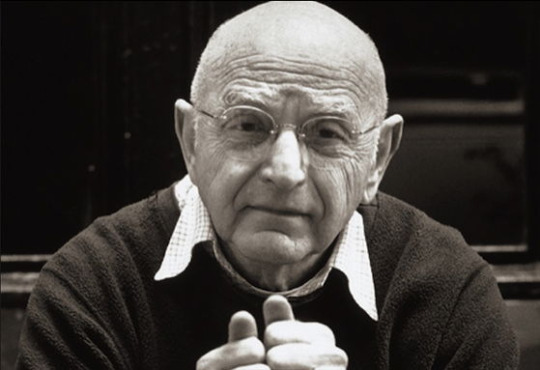
1932 – Duane Michals is an American photographer. Largely self-taught, his work is noted for its innovation and artistry. Michals' style often features photo-sequences and the incorporation of text to examine emotion and philosophy, resulting in a unique body of work.
In 1958 while on a holiday in the USSR he discovered an interest in photography. The photographs he made during this trip became his first exhibition held in 1963 at the Underground Gallery in New York City. Duane Michals settled in New York in the late 1950s and became known as a commercial and fashion photographer.
For a number of years, Michals worked in commercial photography, working for Esquire and Mademoiselle, and he covered the filming of The Great Gatsby for Vogue (1974). He did not have a studio. Instead, he took portraits of people in their environment, which was a contrast to the method of other photographers at the time, such as Avedon and Irving Penn. In 1968 Michals was hired by the government of Mexico to photograph the 1968 Olympic Games. In 1970 his works were shown at the Museum of Modern Art, New York.
His early work became well known for its insistent, and often humorous, use of the narrative series. Many such works actually incorporated handwritten text onto the images. Thematically, Michals has a recurrent fascination with making tangible the intangible realm of love, death, dreams, and wishes. His works deal with human sexuality, both straight and gay, but always in a charmingly moving and innocent manner.
Though he has not been involved in gay civil rights, his photography has addressed gay themes. As early as 1970, Michals plotted the psychic terrain of urban gay life with his series Chance Meeting, in which two men are seen to cruise each other within the sharply receding space of an alley that communicates both the encounter's intensity and also its potential for alienation.
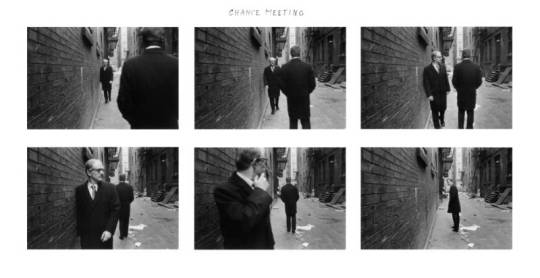
"Chance Meeting"
The Unfortunate Man (1978) allegorizes the crippling personal effects of gay criminalization, combining photographic image and coarsely handwritten text in what would become Michals's distinctive style.
His frequent incorporation of textual elements is not only Michals's accounting for reality beyond the visible world, but also his unassuming participation in the gay literary tradition that occasioned two books of photographic homages: Homage to Cavafy (1978) and Salute, Walt Whitman (1996). (Among Michals's two dozen books and catalogues, there is also a tribute to René Magritte, with whom Michals shared a fondness for sophisticated visual humor.)
With the publication of his illustrations of ten homoerotic poems by Constantine Cavafy, Michals identified himself publicly as gay, and thereafter one finds in his works images of tremendous tenderness between men, for example, Just to Light His Cigarette Was a Pleasure (1978) and How Nice to Watch You Take a Bath (1986).
In 1976 Michals received a grant from the National Endowment for the Arts. Michals also produced the art for The Police album Synchronicity in 1983, and Richard Barone's Clouds Over Eden album in 1993.
Michals has been in a relationship with his partner for 50 years. Though he has not been involved in gay civil rights, his photography has regularly addressed gay themes and quietly added to the storehouse of twentieth-century gay imagery.

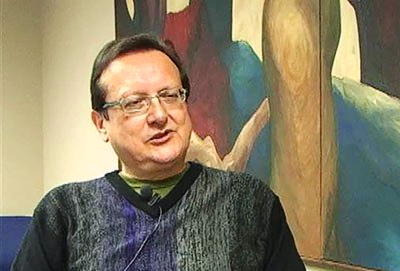
1952 – Daniel David Moses is a First Nations poet and playwright from Canada.
Moses, of Delaware descent on his father's side and Tuscarora descent on his mother's, was born in Ohsweken, Ontario, and raised on a farm on the Six Nations of the Grand River near Brantford, Ontario, Canada. In 2003, Moses joined the department of drama at Queen's University as an assistant professor. In 2019, he was appointed Professor Emeritus by Queen's University, Kingston, Canada.
He has worked as an independent artist since 1979 as a poet, playwright, dramaturge, editor, essayist, teacher, and writer-in-residence with institutions as varied as Theatre Passe Muraille, the Banff Centre for the Arts, Theatre Kingston, the University of British Columbia, the University of Western Ontario, the University of Windsor, the University of Toronto, the Sage Hill Writing Experience, McMaster University and Concordia University.
He is openly gay, and also claims "brothers and sisters among Two-Spirit people." Some of his works, therefore, reflect upon and explore the complexities of Native Two-Spirit or Queer identities


1954 – John Travolta is an American actor, dancer, and singer. There have been continuous claims that he is gay, some of these claims even leading to lawsuits.
Travolta first became known in the 1970s, after appearing on the television series Welcome Back, Kotter and starring in the box office successes Saturday Night Fever and Grease. Travolta's acting career declined through the 1980s.His career enjoyed a resurgence in the 1990s with his role in Pulp Fiction, and he has since continued starring in more recent films such as Face/Off, Swordfish, and Wild Hogs. Travolta was nominated for the Academy Award for Best Actor for Saturday Night Fever and Pulp Fiction. He won the Golden Globe Award for Best Actor - Motion Picture Musical or Comedy for his performance in Get Shorty. In 2014, he has received the IIFA Award for Outstanding Achievement in International Cinema at the 15th IIFA Awards held at the Raymond James Stadium in Tampa, Florida, in the United States.
Travolta married actress Kelly Preston in 1991. The couple had a son, Jett. In 2009, Jett died while on a Christmas vacation in The Bahamas. Their daughter, Ella Bleu, was born in 2000 and a third child, a son named Benjamin, was born in 2010 in Florida. Travolta and Preston have regularly attended marriage counseling; Travolta has stated that therapy has helped the marriage.
Travolta has been a practitioner of Scientology since 1975 when he was given the book Dianetics while filming the movie The Devil's Rain in Durango, Mexico. After the 2010 Haiti earthquake, he joining other celebrities in helping with the relief efforts, Travolta flew his 707 full of supplies, doctors, and Scientologist Volunteer Ministers into the disaster area.
In 2012, Fabian Zanzi, a former employee of Royal Caribbean Cruises, accused the "Grease" star of coming onto him aboard a ship in 2009. "Travolta forced his naked person and his erect penis against plaintiff's person causing plaintiff to experience pain, shock, embarrassment, distress and fear," the complaint filed in federal court in Los Angeles said. Later, lawyers for Zanzi and Travolta signed documents dismissing the action, which prevented Zanzi from refiling.
In May 2012, an anonymous masseur filed a lawsuit against Travolta citing claims of sexual assault and battery. A lawyer for Travolta said that the allegations were "complete fiction and fabrication" and someone wanting their 15 minutes of fame. Travolta's counsel also stated that his client would be able to prove that he was not in California on the day in question and asserted that Travolta would "sue the attorney and Plaintiff for malicious prosecution" after getting the case thrown out. A second masseur later joined the lawsuit making similar claims. Both lawsuits were subsequently dropped by the complainants and dismissed without prejudice.
In September 2014, Travolta denied claims made in January 2014 by his former pilot, Douglas Gotterba, that they had shared a sexual relationship while working for Travolta's aircraft company, Alto, for six years before leaving voluntarily in 1987. Gotterba argued that he was not bound by any confidentiality agreement during his term in the position.


1956 – John R. Stowe, a spiritual teacher, cofounder of Gay Spirit Visions, and founder of EarthFriends, was born. He lived a closeted gay existence until 1979, when he began a quest to discover what it meant to live as a gay man. As with many gay men, much of that struggle meant dealing with negative self images acquired from growing up in a world that does not accept homosexuality.
John began his studies of the living world rather traditionally, majoring in biological sciences and earning an M.S. degree in Biology/Ecology that led to a teaching position in a small university near Atlanta.
After several years of teaching - and a couple more spent traveling through Mexico, Central America, and Europe - he embarked on a study of natural healing. In 1981, John received certification from the Atlanta School of Massage as a Licensed Massage Therapist - having taught there concurrently.
After coming out, he found employment as a bodyworker/ masseur and pursued his spiritual and self-understanding quest through a spectrum of alternative spiritual options from the gay-informed Christianity of Episcopal priest Malcolm Boyd to channeller Andrew Ramer. He found bodywork as one tool that assisted the exploration of the inner self. He soon emerged as a spiritual teacher serving the gay community primarily in the Atlanta, Georgia, area.
In 1990, Stowe joined with a small group of friends who had pursued similar spiritual journeys, including Ramer, to found Gay Spirit Visions. The primary program of Gay Spirit Visions is an annual conference where gay men gather to explore alternative spiritual options. The work of the group provided the atmosphere for him to develop his book, Gay Spirit Warrior (1999). Gay Spirit Warrior was written to assist men begin an inner journey and start to experience the reality of the self, both positive and negative.
In 1984, Stowe had discovered flower essences, substances distilled from flowers and other plants by a particular method first discovered by Edward Bach, a British physician. Stowe began to make his own flower essences from flowers found in the Southeastern United States and use them in his bodywork sessions. In the mid-1980s he founded EarthFriends to manufacture and sell the essences he had developed. One line of products, Exploring Gayspirit Oils, is marketed primarily to gay men.

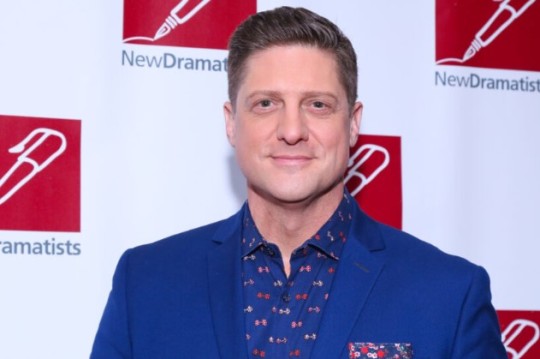
1969 – Christopher Sieber is an American actor. He is best known for his roles as Kevin Burke in Two of a Kind starring Mary-Kate Olsen and Ashley Olsen, and Lord Farquaad in Shrek the Musical. Christopher studied acting and musical comedy at The American Musical and Dramatic Academy in New York City. Sieber has appeared in Broadway musicals, including Into the Woods, Monty Python's Spamalot and Shrek The Musical. He is a two-time Tony Award nominee for his work in Spamalot and Shrek The Musical.
Sieber has starred in two television series: Two of a Kind with the Olsen twins and It's All Relative with John Benjamin Hickey and Harriet Sansom Harris.
While It's All Relative was being produced, Sieber came out as gay and said that he was happily partnered to actor and chef Kevin Burrows. They married on November 24, 2011, in New York City.
Sieber is involved with Broadway Cares/Equity Fights AIDS (BC/EFA) and has appeared in several of its Broadway Cares revues, among other events the charity produces.


Today's Gay Wisdom:
Audre Lorde
[{(o)}]|[{(o)}]|[{(o)}]|[{(o)}]| [{(o)}]|[{(o)}]
When I dare to be powerful, to use my strength in the service of my vision, then it becomes less and less important whether I am afraid.~ Audre Lorde, The Cancer Journals
Each time you love, love as deeply as if it were forever / Only, nothing is eternal. ~ Audre Lorde, Undersong
I have come to believe over and over again that what is most important to me must be spoken, made verbal and shared, even at the risk of having it bruised or misunderstood. That the speaking profits me, beyond any other effect. ~ Audre Lorde, from the essay "The Transformation of Silence into Language and Action", in Sister Outsider
Your silence will not protect you. ~ Audre Lorde from the essay "The Transformation of Silence into Language and Action", in Sister Outsider
I am who I am, doing what I came to do, acting upon you like a drug or chisel or remind you of your me-ness as I discover you in myself. ~ Audre Lorde, Sister Outsider
Poetry is not a luxury. It is a vital necessity of our existence. It forms the quality of the light within which we predicate our hopes and dreams toward survival and change, first made into language, then into idea, then into more tangible action. Poetry is the way we help give name to the nameless so it can be thought. The farthest horizons of our hopes and fears are cobbled by our poems, carved from the rock experiences of our daily lives. ~ Audre Lorde
I have always wanted to be both man and woman, to incorporate the strongest and richest parts of my mother and father within/into me -- to share valleys and mountains upon my body the way the earth does in hills and peaks. ~ Audre Lorde, Zami: A New Spelling of My Name


15 notes
·
View notes
Note
I know there's a lot of answers out there for this question, but personally like what do you think are the best beatle books to read? Like what's the best for you?
hello anon! I'm hyperfixated so I'll read pretty much anything on them tbh. I do like to read the more anecdotal stuff because I love gossip lol - and some of them can be so revealing (both of the Beatles themselves and the authors). But I'll read and have enjoyed lots of stuff: the big biogs, memoirs, fan accounts, academic studies, that novel by Paul's ex publicist.
anyway, here's the list of Beatles books I've read all the way through and what rating out of 5 I'd give them. The books I've rated highest have generally been the big biographies just because I think they tend to say more and tell a fuller story, since obvs that's their purpose, so they're a more satisfying read. My ratings are based on a random combo of what they can tell us about the Beatles, how interesting I find them historiographically/as Beatles reception, and how much I enjoyed reading them.
★★★★★
One Two Three Four: The Beatles in Time (Craig Brown)
The Beatles: The Authorised Biography (Hunter Davies)
Shout!: The True Story of the Beatles (Philip Norman)
Love Me Do!: The Beatles' Progress (Michael Braun)
Can't Buy Me Love: The Beatles, Britain, and America (Jonathan Gould)
The Man Who Gave the Beatles Away: The Amazing True Story of the Beatles' Early Years (Allan Williams & William Marshall)
★★★★☆
The Love you Make: An Insider's Story of the Beatles (Peter Brown & Steven Gaines)
Backbeat: Stuart Sutcliffe - The Lost Beatle (Alan Clayson & Pauline Sutcliffe)
The Gospel According to the Beatles (Steve Turner)
Lennon vs. McCartney: The Beatles, Inter-band Relationships and the Hidden Messages to Each Other in Their Song Lyrics (Adam Thomas)
Beatle! The Pete Best Story (Pete Best & Patrick Doncaster)
Dreaming the Beatles: The Love Story of One Band and the Whole World (Rob Sheffield)
A Cellarful of Noise (Brian Epstein)
Waiting for the Beatles: An Apple Scruff's Story (Carol Bedford)
John (Cynthia Lennon)
John Lennon: In My Life (Pete Shotton & Nicholas Schaffner)
Summer of Love: The Making of Sgt. Pepper (George Martin with William Pearson)
★★★☆☆
John, Paul & Me Before the Beatles: The True Story of the Very Early Days (Len Garry)
The Beatles and Me on Tour (Ivor Davis)
A Twist of Lennon (Cynthia Lennon)
At the Apple's Core: The Beatles from the Inside (Denis O'Dell with Bob Neaverson)
The Guitar's All Right as a Hobby, John (Kathy Burns)
With the Beatles (Alistair Taylor)
The Day John Met Paul: An Hour-By-Hour Account of How the Beatles Began (Jim O'Donnell)
The Beatles: I Was There (Richard Houghton)
All Our Loving: A Beatle Fan's Memoir (Carolyn Lee Mitchell & Michael Munn)
Rock Bottom (Geoff Baker)
Once There Was a Way: What if the Beatles Stayed Together? (Bryce Zabel)
Like Some Forgotten Dream: What if the Beatles Hadn't Split Up? (Daniel Rachel)
Dylan, Lennon, Marx and God (Jon Stewart)
Paul is Undead: The British Zombie Invasion (Alan Goldsher)
★★☆☆☆
Paperback Writer (Mark Shipper)
18 notes
·
View notes
Text
Alright this is awkward that I came to Tumblr only to see loa movie shitposts and found out everyone's read the Seven Pillars +Wilson's authorised biography +TEL's selected letters already. I feel like a bat in a flock of pigeons, but damn how I love this community, I swear I do.
Anyways, today would be my first day read ing The Seven Pillars of Wisdom, wish me luck and please feel free to reach out to me, I'd love to have friends to discuss things with.
PS Tumblr is truly a bewildering platform, I don't have a clue how it works and am still trying to figure things out.
8 notes
·
View notes
Text

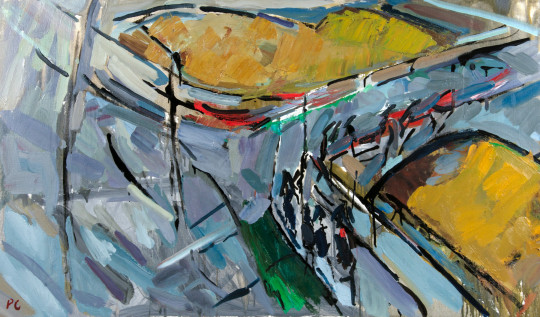






Peter Coker, RA (British, 1926-2004)
‘One of the foremost realist painters in England … Coker will be remembered for the refreshing nature of his astringent vision, for his consummate mastery as a draughtsman, painter and etcher, and as a proud and vigorous inheritor of a great artistic tradition.’ (Frances Spalding, Independent, 20 December 2004)
Peter Coker was born in London on 27 July 1926. He first studied at St Martin’s School of Art (1941-43; 1947-50), and began to exhibit regularly at the Royal Academy from 1950. Though he was a contemporary of John Bratby and Edward Middleditch at the Royal College of Art (1950-54), his work related only briefly to the raw figuration of the Kitchen Sink School. This was signalled by his paintings of a Leytonstone butcher’s shop which were included in his highly successful first solo show (Zwemmer Gallery 1956). His development as a landscape painter originated in his first encounter with the canvases of Gustave Courbet on a trip to Paris (1950). By the mid 1950s, he was an established landscapist in the French manner, working from the motif on the coasts of Normandy (1955) and Brittany (1957), and drawing inspiration from such contemporaries as Nicholas de Stäel. Later in the decade, he revived the spirit of Barbizon in his paintings of Epping.
Coker moved with his family to Manningtree in Essex (1962), and added occasional appearances at Colchester School of Art to teaching at St Martin’s. Nevertheless, he concentrated on his work, and made time for painting trips to France, the North of England and Scotland. He held solo shows at the Zwemmer Gallery (1960s), the Thackeray Gallery (1970s) and Gallery 10 (1980s), and continued to exhibit regularly at the Royal Academy. He was elected an Academician (ARA 1965, RA 1972), and had his early images of the butcher’s shop presented at the RA in one of an increasing number of public retrospectives (1979).
From 1972, Coker made several visits to Bargemon, Provence, during which he gradually accepted the character of the South of France, and integrated its startling light and colour into his established palette and handling. Late in the decade, he applied this approach to an ideal motif, in beginning a series of paintings of the garden of the Clos du Peyronnet, Menton. Following the death of his son Nicholas in 1985, he stayed at Badenscallie, Ross-shire, Scotland. There he began an impassioned series of landscapes, extended on subsequent visits, which focussed on salmon nets drying at Achiltibuie. These reaffirmed his essential identity as ‘a northern painter’, which had actually become more strongly emphasised by his contrasting achievement of painting the south. The many studies and paintings inspired by both Mediterranean France and the West of Scotland comprised important elements of such recent retrospectives as that of drawings and sketchbooks at the Fitzwilliam Museum (1989) and that of paintings and drawings at Abbot Hall Art Gallery (1992).
In October 2002, Chris Beetles mounted a major retrospective of the work of Peter Coker and, at the same time, launched the artist’s authorised biography. The beautifully produced hardback book, with over 250 illustrations, contains contributions from Richard Humphreys (Tate Gallery), John Russell Taylor (The Times), and David Wootton (Chris Beetles Ltd). The book includes a comprehensive biography and chronology, essays, appraisals of his work, a catalogue raisonné and lists of his exhibitions and sketchbooks.
While the monograph and retrospective were being planned, it seemed that the artist’s career might have been drawing to a close. However, the joint project revived his energies significantly. This was manifested by a range of new work, which was shown at Chris Beetles Ltd during spring 2004. The motifs are mostly familiar, being drawn from existing sketchbooks, and range across France and encompass Britain. Yet the handling was freer than ever, and the palette more vibrant – accomplishments of which Peter was justifiably proud. This display was complemented by an exhibition of recent Parisian subjects, touring to Gainsborough’s House, Sudbury, the Royal Academy of Arts, and the Graves Art Gallery, Sheffield.
Peter Coker died in Colchester, Essex, on 16 December 2004.
6 notes
·
View notes
Text
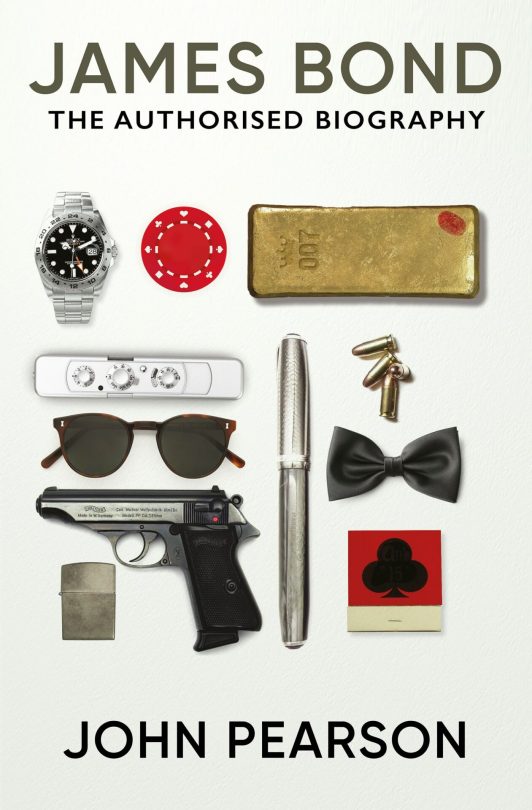
JOHN PEARSON JAMES BOND: THE AUTHORISED BIOGRAPHY
JAMES BOND: THE AUTHORISED BIOGRAPHY will be reissued in October 2023 featuring this stunning new cover design by David Eldridge.
11 notes
·
View notes
Text

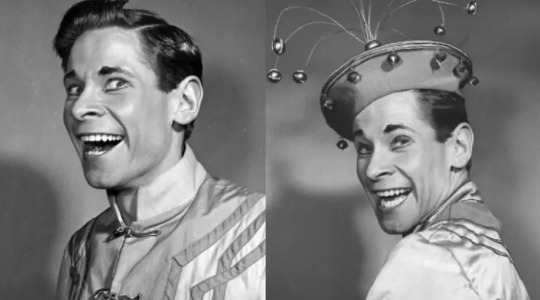
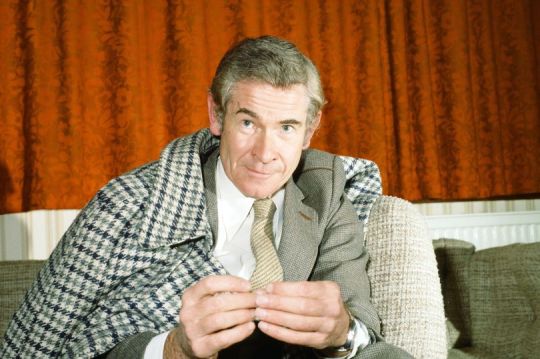
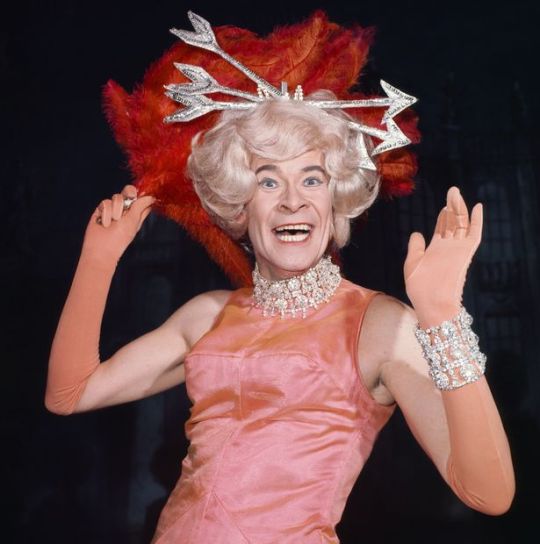

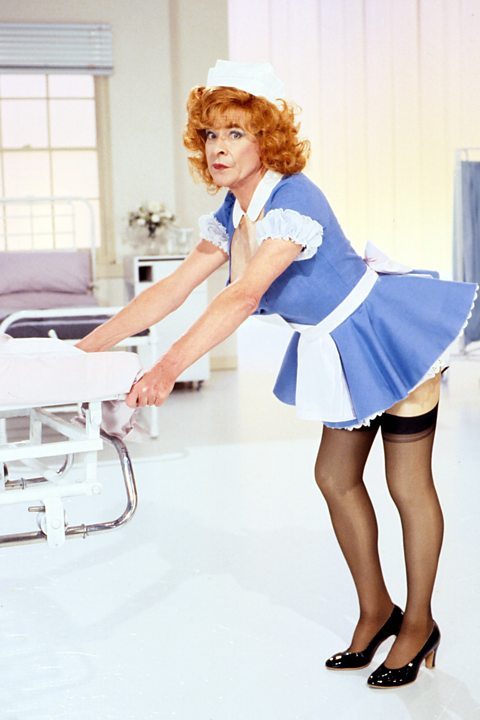
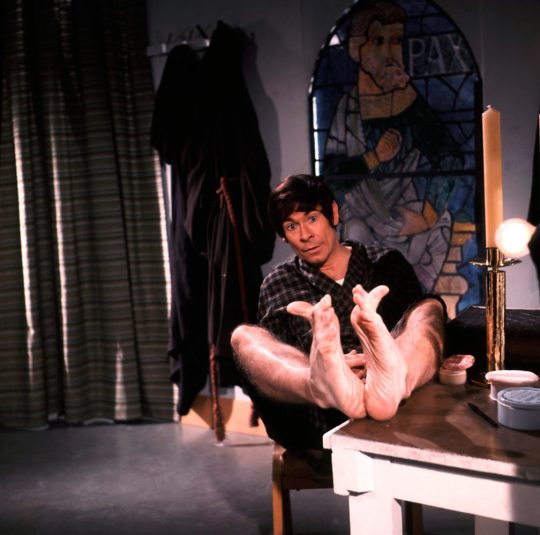



Happy 97th Birthday a true comedy great Stanley Baxter.
Born in Frergus Drive in Glasgow in 1926, Stanley began his long career on BBC Scotland's edition of the Children's Hour. He developed his performing skills further during his national service with the Army's Combined Services Entertainment unit, working alongside comedy actor Kenneth Williams, actor Peter Vaughan, film director John Schlesinger and dramatist Peter Nichols, who used the experience as the basis for his play Privates on Parade.
After a return to Glasgow and civvy street he spent three years at The Citizens Theatre before seeking more work and wider fame by moving to London in 1959, it was a move that paid off straight away, that same year he won a Bafta for co-hosting the satirical sketch show On the Bright Side. He also won two years running, in 1973 and 1974, for The Stanley Baxter Picture Show, and again in 1981 for The Stanley Baxter Series.
Some of his best-loved comedy sketches include Parliamo Glasgow, in which the Glaswegian dialect was presented as a foreign language. It included phrases such as “Izat a marra on yer barra, Clara?” "Zarraburdorahairywullie" and the uniquely Glaswegian word “Sanoffy”, as in “Sanoffy cold day”
Stanley didn't abandon Scotland though, throughout his career he remained a favourite of the Scottish panto circuit, often playing the gloriously costumed dame alongside Angus Lennie, Jimmy Logan or Ronnie Corbett, until he retired in 1992.
In 1994 he returned to radio, appearing in plays and sitcoms. In 1997, he was honoured with a lifetime achievement award at the British Comedy Awards. The Stanley Baxter Playhouse ran on Radio 4 from 2006 until 2014.
Even though he retired from TV comedy some 30 years ago, Stanley Baxter continues to hold a special place in the viewing nation’s heart.
He eats well, likes a glass of wine and enjoys a quiet domesticated life. Well into his 80s he was still cycling and swimming. Even when he was in the public eye, he shunned personal publicity, rarely doing interviews or appearing on chat shows.
In his retirement he has written an autobiography but refuses to allow it to be published until after his death, not apparently because it contains any hugely scandalous stories of his celebrity friends, but because he didn’t fancy "schlepping "round the country doing promotional appearances, press interviews and book signings, let’s hope it is a good few years before it is released then!
A widower since 1997, he says he doesn’t find it difficult to fill his days. “You wonder how you ever had time to work,” he says. “I miss talking to actors. I can relate to actors better than real people. I have so few friends left. “I suppose I’m a bit of a loner. I’m not the kind of person to drop in on the neighbours.”
In 2020 Stanley in an authorised biography, The Real Stanley Baxter told for the first time of his struggles to come to terms with his sexuality, his efforts to keep the fact that he is gay secret and the effect his troubled marriage had on his life.
The book charts the career of Baxter, from his early days to the complex relationship with his wife Moira, his early sexual encounters as a teenager, and the strenuous efforts he made to maintain his privacy in later life, including taking legal action over the publication of the diaries of actor Kenneth Williams, a long-time friend, after he had passed away.
Baxter described his discomfort with his homosexuality in the book, writing: "Anybody would be insane to choose to live such a very difficult life. There are many gay people these days who are fairly comfortable with their sexuality, fairly happy with who they are. I’m not. I never wanted to be gay. I still don’t.”
If you want to know more about Stanley I recommend watching the feature length documentary, Stanley Baxter’s Best Bits - and More, it’s on 5 and you don’t have to sign in to watch the show, it’s just over an hour long so settle down with a cuppa before viewing.
https://www.channel5.com/show/stanley-baxter-s-best-bits-and-more
12 notes
·
View notes
Text
Get to know you game! Answer the questions and tag 9 people you want to know better!
Last song listened to:
I think it was I was made for lovin' you by KISS; it was on the radio before I left work today.
Currently reading:
Before the coffee gets cold by Toshikazu Kawaguchi; just finished the authorised biography of James Bond last night.
Currently watching:
Nothing, actually.
Currently obsessed with:
Macbeth, and Shakespeare altogether.
Tagged by: @harahel89
Tagging: YOU
5 notes
·
View notes
Text
14 years ago today, Enter Shikari released 'Destabilise'.
The single was the band's first release after stepping away from their deal with Atlantic Records, and continued the thread that 'Common Dreads' sparked — focused on both politics and unity.
Here's the story.

Before I start, a good chunk of what I'm about to say is from Luke Morton's incredible ES biography 'Standing Like Statues' — and I don't want to take away from that.
So, I'll only cover the basics. If you wanna know more, go read the book!
To put it short, the band had found that the major label life was not for them — the nature of a big corporation simply clashed with the spirit of Enter Shikari.
However, where most artist would falter after leaving a deal like theirs —
Enter Shikari were on fire.
Destabilise was a triumphant next step for the band. With passion, spirit, and love, the song has gone down in the ES books as one of their most popular and beloved cuts.
Compositionally, the song is rebellious and full of energy. The song's structure is unique and bold.
The main motif of the song is fanfare — a motif that carries through the band's whole history, but this is one of the strongest examples of how Rou uses brass to signify that Enter Shikari is only just getting started. Very similar to their use of brass on AKFTWW.
One of the most iconic things about Destabilise, however, is the line —
"Rory C, what's your thesis?"
Now, Rory had no clue how iconic this line would be. But, it goes down in the Enter Shikari lore as one of the most important questions ever asked in an ES song.
Ultimately, though. This song was a rebellious song that ushered in the 'A Flash Flood of Colour' era with a bang, and has only gone down as one of the band's most popular and beloved.
The song has over 5 million streams on Spotify, and is a staple of the live set.
It is their 4th highest played song of all time live (with 613 performances) and was debuted at Sziget Festival 2010, just over six months after the single released (August 13th)
Here's a video of the first performance of Destabilise!
youtube
According to the description of this video, Destabilise was actually a cover of the song 'Destabilise' by St Albans jazz-legends 'Jonny and The Snipers'.
This could in fact be accurate, but has never been fully confirmed.
youtube
Ultimately, this song is one of Enter Shikari's most pivotal and iconic songs.
Ushering in the Flash Flood of Colour era with ambition, rebellion, and unity, the song is a key part of the Enter Shikari lore and will always be a beloved part of the band's history.
2 notes
·
View notes